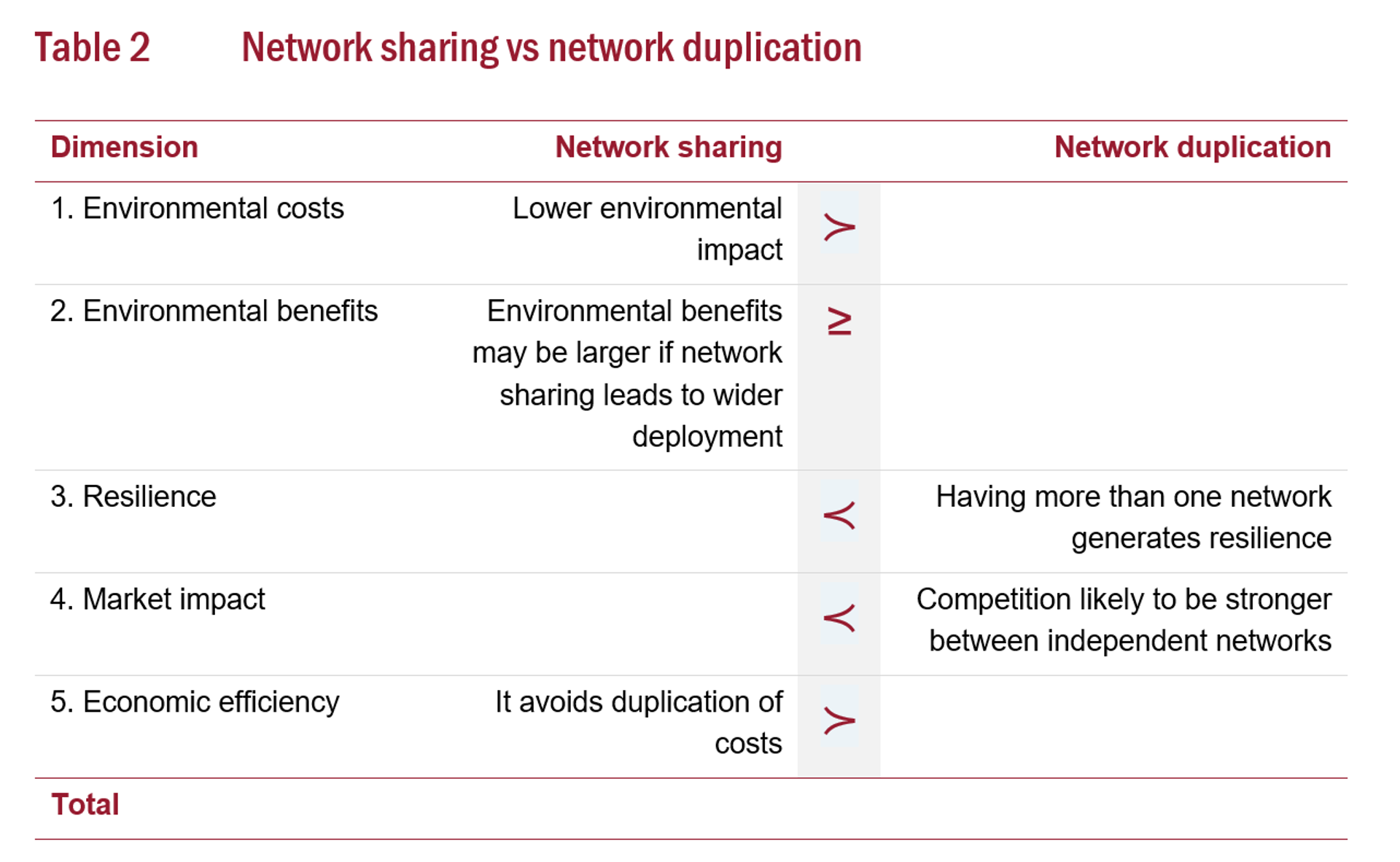
Telecom networks are critical for the innovation needed to make the economy more sustainable.
However, the networks themselves have an impact on the environment. A key challenge for regulators is to balance encouraging further competition and innovation and minimising negative environmental effects.
Regulators will have to grapple with multiple trade-offs to get that balance right. They already face tensions between protecting end users’ interests and promoting the sector’s growth; between competition and the risk of fragmentation; between static and dynamic efficiency; and between short-term and long-term goals.
Adding environmental sustainability to the mix will only heighten tension with the objectives and principles embodied in the regulatory framework.
The strain on regulatory aims from sustainability
Promoting investment and competition between different telecommunication networks is an important objective of regulators worldwide. Sustainability is likely to conflict with that goal.
Investment is expected to result in higher-quality connectivity services fostering economic growth and digital inclusion. However, deploying higher-capacity telecom networks will likely boost demand through a "rebound effect". Producing advanced equipment for upgrades also increases waste, water consumption and resource extraction: technological progress has an environmental price.
There has been a bias in several jurisdictions towards competition between different network infrastructures because regulators consider the long-term benefits to outweigh the costs.
- Infrastructure-based competition is expected to accelerate the roll-out of very-high-capacity networks and spark greater competition in the long run, leading to better consumer outcomes.
- The related costs are down to the loss of productive efficiency due to the duplication of infrastructure.
Adding environmental considerations to the analysis may shift the balance:
- The benefits from infrastructure-based competition may be greater, as increased innovation enables downstream activities with a lower environmental impact;
- But the costs will also be higher because of the duplication of assets and the potential downstream increase in demand, leading to higher data consumption.
Against this background, options that produce fewer benefits but mitigate the environmental costs may become optimal. For example, infrastructure sharing may provide many of the benefits of competition while reducing the industry’s environmental footprint.
A framework to account for environmental sustainability
To manage the potential tensions between environmental sustainability and long-term regulatory objectives, we propose a framework that encompasses the following four elements.
- A methodology for measuring the environmental impact of networks based on a life-cycle approach. This means distinguishing between three key phases:
- “The network deployment phase - the manufacturing of equipment ducts and cables, as well as digging to lay the cables and construction of installations to house the kit;
- The operation phase - the running of the network, including the use of electrical power and maintenance work; and
- The decommissioning phase - the removal of the network elements and equipment and the management of associated waste.”
- Producing a range of policy options to achieve the long-term regulatory objectives, with potentially different effects on environmental sustainability.
- Assessing the costs and benefits of these options, including their environmental impact. This requires considering both:
- The environmental costs, as per step 1, but also
- The potential benefits, such as fostering the green transition of other sectors or reducing energy consumption.
- Ranking the different policy options. This would benefit from an analytical tool to quantify their overall impact. Developing such a tool requires:
- Identifying the relevant dimensions and sub-dimensions to be assessed, for example environmental costs and benefits, network resilience and the effects on competition.
- Measuring and rating the various dimensions.
- Compiling an aggregate weighted indicator to compare the policy options. Regulators may want to attach a higher weighting to dimensions they consider priorities.
Applying the framework to assess network sharing versus duplication
Network sharing lowers deployment costs and operational expenses, for example by splitting some recurrent costs such as land rent or power. The result is greater economic efficiency.
Compared with network duplication, network sharing also entails lower environmental costs in the phases of deployment, operating and decommissioning.
The environmental benefits from network sharing are likely to be similar to those of network duplication. They may be greater if sharing leads to a more extensive network, thereby allowing potential cost reductions and innovation in areas that would otherwise go unserved.
However, network sharing implies less resilience, for example in the event of extreme weather conditions, which may become more frequent due to climate change. Network duplication may also be superior judged by its market impact, as it will likely lead to more intense competition.
Table 2 compares network sharing with duplication in the five dimensions discussed.

In the absence of environmental considerations, network duplication may be a superior option to network sharing because it leads to greater resilience and stiffer competition. But including environmental factors in the equation will bias the regulatory decision towards network sharing. The weights assigned to the different dimensions we suggest will determine the preferred option. It is, therefore, important that regulators are clear about their priorities.
Conclusion
Integrating sustainability considerations into regulatory decisions is essential to reduce the environmental impact of the telecoms sector. However, doing so will heighten tensions with some existing regulatory objectives. To address this challenge, we present a four-step framework to promote transparency and guide regulators towards securing environmental sustainability.







